In a village in the mountain province of Ifugao, a group of weavers has taken the initiative to revive the dying art of weaving. And all around the country, the same initiatives have been blossoming in various provinces along with the revival of Philippine cotton. In the process, however, sacred textiles are finding their way into modern-day functions from bed covers to footwear.
With the help of HABI, The Philippine Textile Council, we identify indigenous textiles (as much as we could gather) that are making their way from pre-Hispanic weaves to their incorporation in contemporary fashion and design.
LUZON
Binakol
Origin: Ilocos and Abra
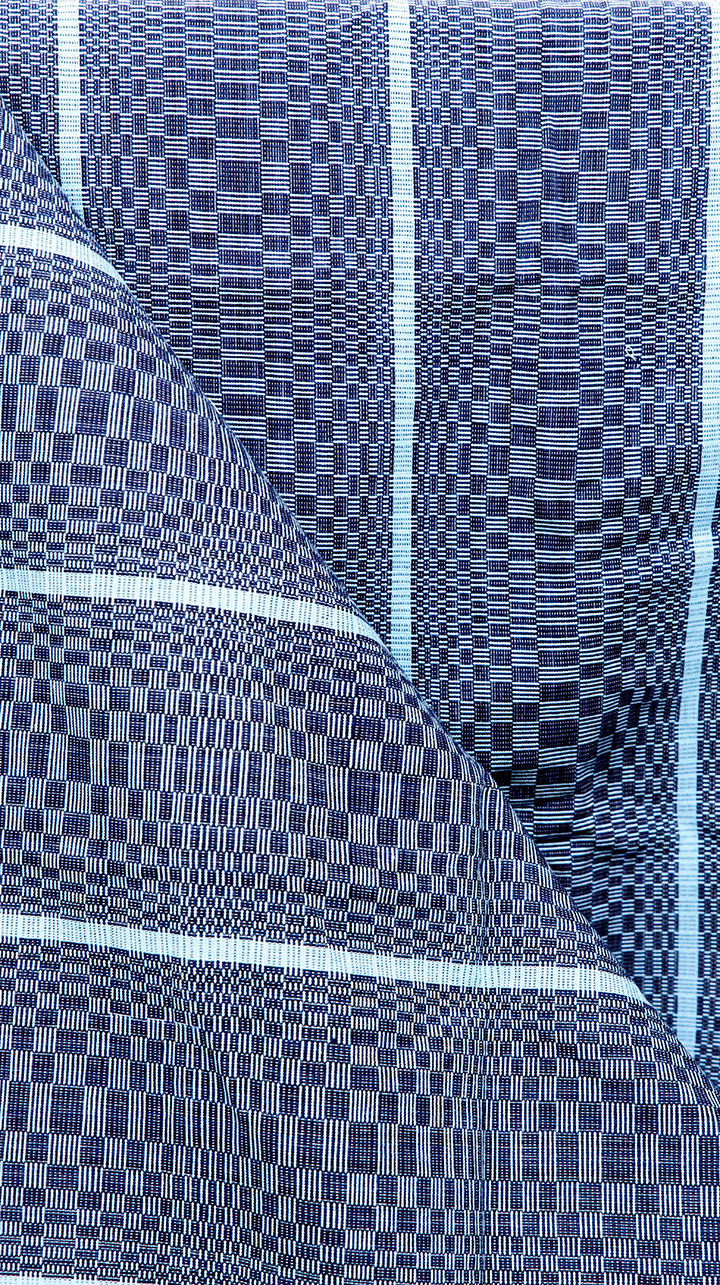 Also known as binakel, binakael, or binakul (Ilocano for “twill”) this is a variation of the popular abel weave. Woven using pedal looms, its design is composed of interlocked geometric patterns, resulting in an optical illusion despite its flat surface. The psychedelic pattern represents the waves of the sea and protects against malevolent spirits by confusing them.
Also known as binakel, binakael, or binakul (Ilocano for “twill”) this is a variation of the popular abel weave. Woven using pedal looms, its design is composed of interlocked geometric patterns, resulting in an optical illusion despite its flat surface. The psychedelic pattern represents the waves of the sea and protects against malevolent spirits by confusing them.
Pinilian
Origin: Ilocos and Abra
 A type of binakul weave that means “chosen” and uses a complicated brocade weave where sticks are inserted on chosen warp (lengthwise) threads. These create designs that “float” on the threads, giving the weave a three-dimensional quality. Designs are mostly representative of nature and their environment.
A type of binakul weave that means “chosen” and uses a complicated brocade weave where sticks are inserted on chosen warp (lengthwise) threads. These create designs that “float” on the threads, giving the weave a three-dimensional quality. Designs are mostly representative of nature and their environment.
Ikat
Origin: Ifugao (municipalities of Kiangan, Banaue, and Hungduan)
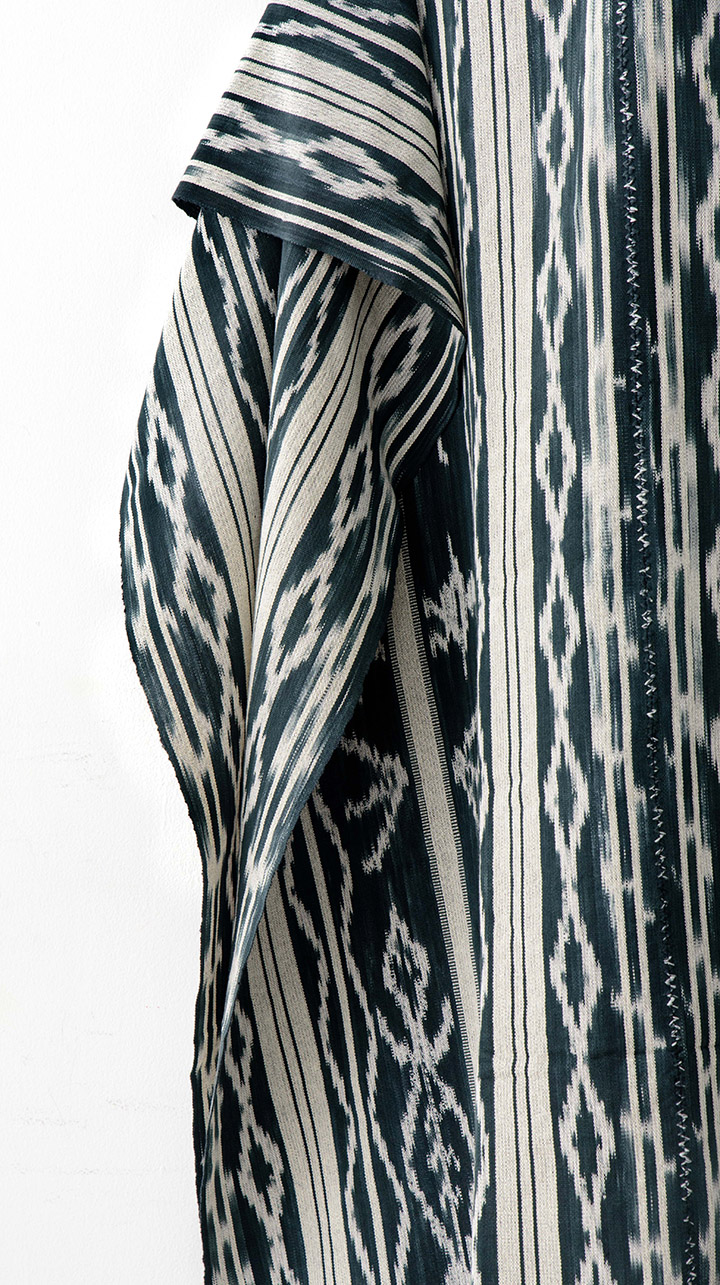 A resist-dyeing technique that is applied to the cotton yarns prior to weaving the fabric. The yarn is wrapped in bundles and dyed, then the areas that are tied together leave colorless patches along the strands. Through the dyeing, the design of the weave is already predetermined before being introduced to the loom and can be a painstaking effort to the untrained. A mix of indigenous plants is used as natural dyes and boiled until the desired color of black or grey is achieved. The ever-popular Kinuttiyan design is supposedly only woven for death rituals.
A resist-dyeing technique that is applied to the cotton yarns prior to weaving the fabric. The yarn is wrapped in bundles and dyed, then the areas that are tied together leave colorless patches along the strands. Through the dyeing, the design of the weave is already predetermined before being introduced to the loom and can be a painstaking effort to the untrained. A mix of indigenous plants is used as natural dyes and boiled until the desired color of black or grey is achieved. The ever-popular Kinuttiyan design is supposedly only woven for death rituals.
VISAYAS
Piña
Origin: Aklan, now also Palawan
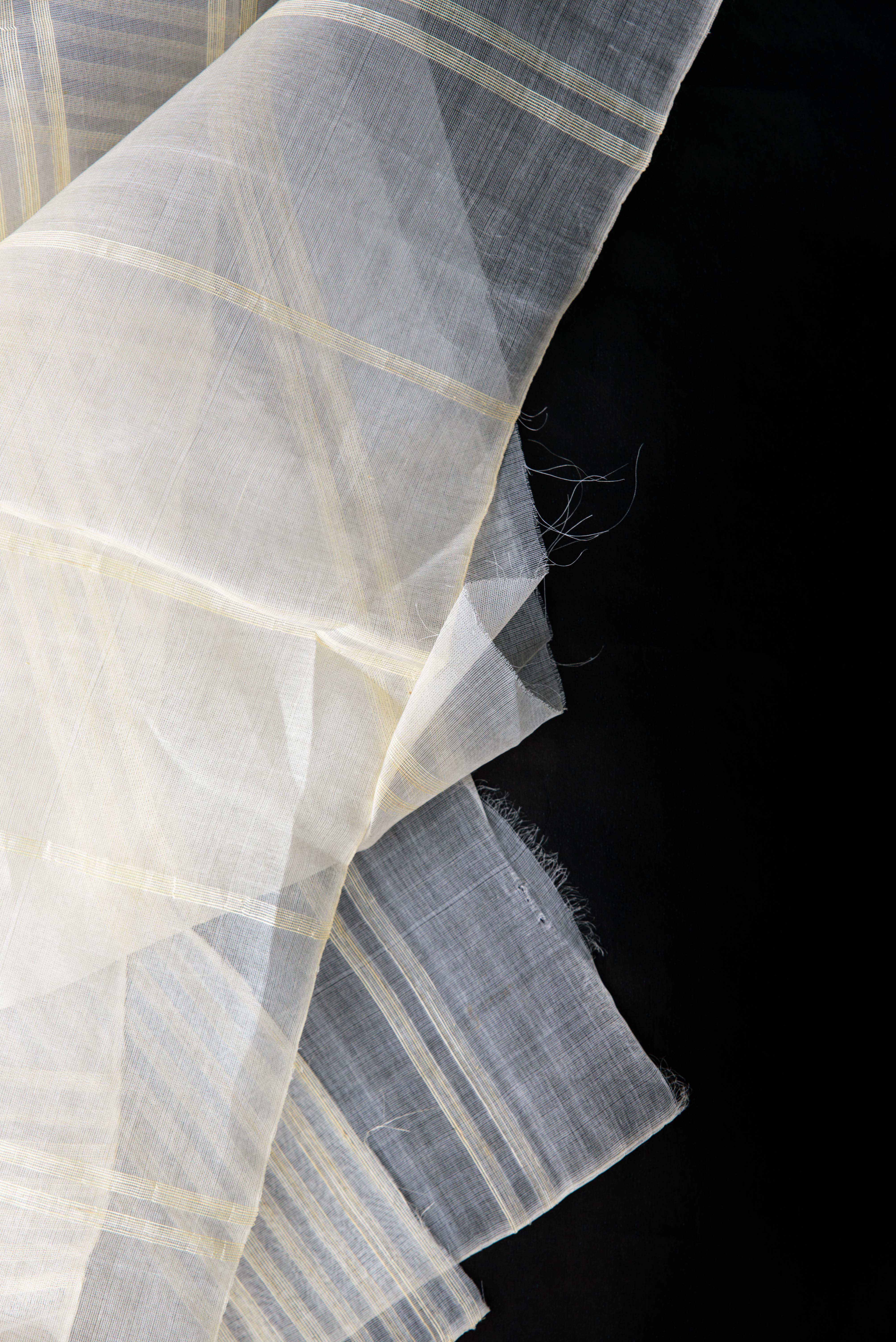
Piña fabric comes from the fruit’s mature leaves which are scraped until only the fibers are left, washed, and cleaned of any plant material. These are then dried, spooled, and woven as itself or into other textiles. Piña fibers can be mixed with silk—piña seda, or abaca—piña jusi.
Patadyong
Origin: Negros (Antique, Panay, Oton, Miagao, Ilo-ilo)
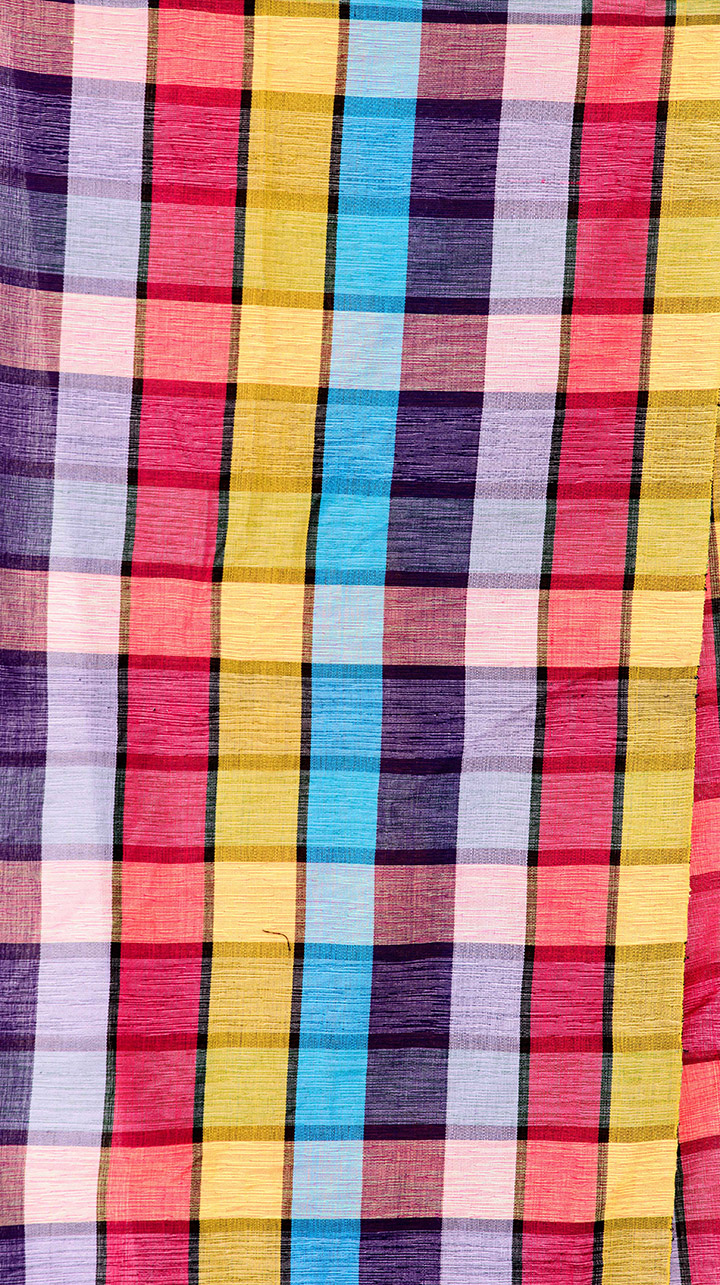 A type of hablon (Ilonggo term for woven material) that resembles the Mindanao malong because of its tubular style that allows it to be worn a number of ways. The weave is done by interlacing different colored threads through a wooden handloom called tiral or habulan locally. The weave comes in either a plaid or checked design.
A type of hablon (Ilonggo term for woven material) that resembles the Mindanao malong because of its tubular style that allows it to be worn a number of ways. The weave is done by interlacing different colored threads through a wooden handloom called tiral or habulan locally. The weave comes in either a plaid or checked design.
MINDANAO
Yakan
Origin: Basilan
The Yakan community in Basilan has settled in Zamboanga to escape the conflict in their hometown. Their intricate weaving utilizes a back strap loom and features various designs that are representative of nature to Islamic sacred geometry.
Types:
Bunga sama
 The highest level of Yakan weaves, its format consists of repetitive patterns, mostly diamonds, meant to represent the continuity of the universe. However, the pattern is said to have been inspired, as well, by the skin of the python.
The highest level of Yakan weaves, its format consists of repetitive patterns, mostly diamonds, meant to represent the continuity of the universe. However, the pattern is said to have been inspired, as well, by the skin of the python.
Peneh pitumpuh
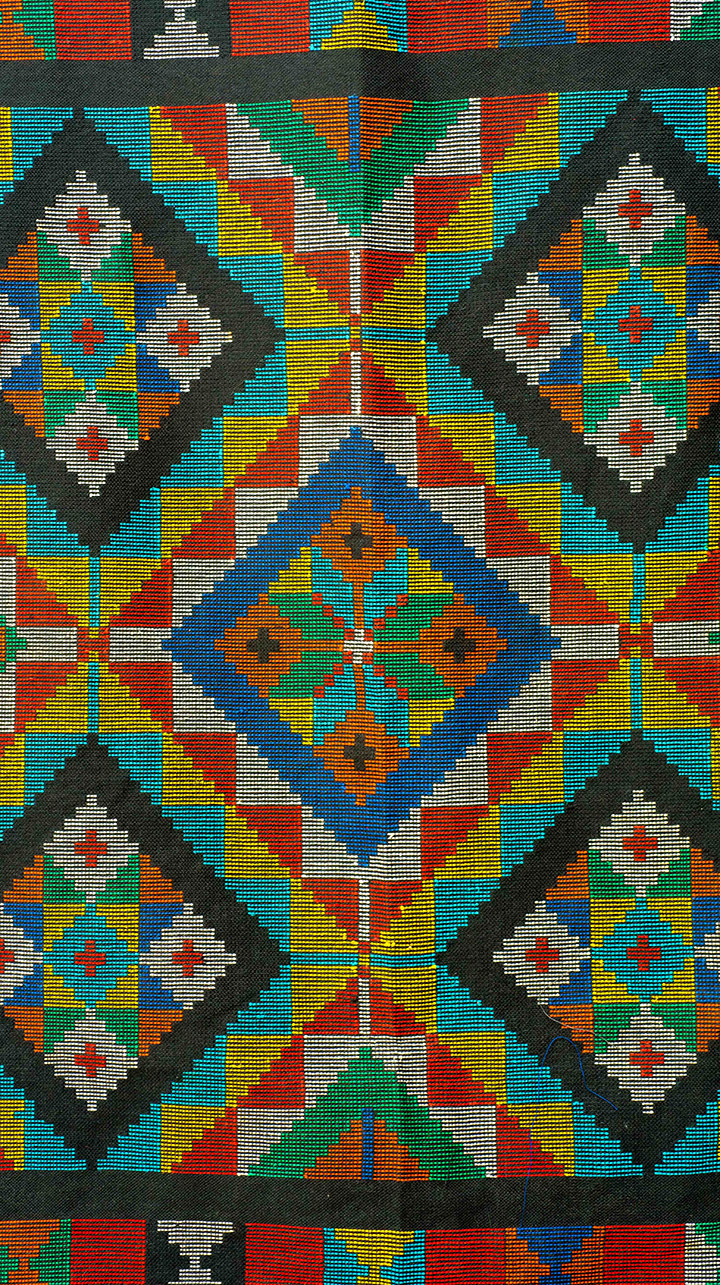 Literally translating to “70 designs/patterns,” the weave was originally reserved for aristocrats and considered the most intricate. Only an expert can weave this tapestry which includes all 70 designs within one meter of cloth featuring the kadjang (fairy wings) or kabba kabba (butterfly).
Literally translating to “70 designs/patterns,” the weave was originally reserved for aristocrats and considered the most intricate. Only an expert can weave this tapestry which includes all 70 designs within one meter of cloth featuring the kadjang (fairy wings) or kabba kabba (butterfly).
Sinaluan
 Flaunts a striped pattern that represents bamboo stalks and nature. The traditional fabric is used as clothing, mostly pants, for men and women.
Flaunts a striped pattern that represents bamboo stalks and nature. The traditional fabric is used as clothing, mostly pants, for men and women.
Saputangan
A square handkerchief used by the women as a headdress and worn in different ways depending on the occasion.
Tausug
Origin: Jolo
The traditional rivals of the Yakans in Sulu, the Tausug tapestry weaves make use of a back strap loom and also feature sacred geometries in their designs. The Tausug people follow the Islamic prohibition of representing human and animal forms; thus, the ukkil or abstract motifs in geometric shapes suggestive of the natural world.
Types:
Pis syabit and Kambut
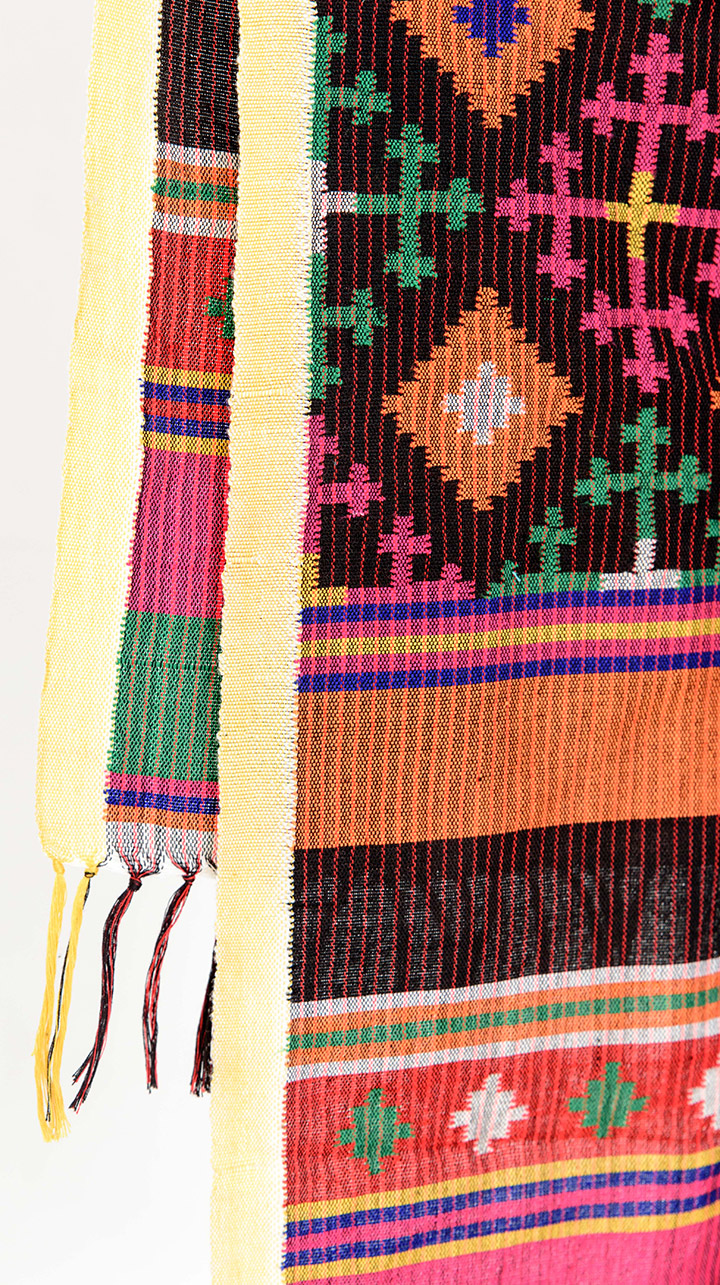 A multi-colored headdress is traditionally worn by men that features symmetrical geometric designs and represents the wearer’s rank in society. It can be draped over the shoulder or tied around the hilt of the kris (sword). The kambut, on the other hand, is a waist sash worn by men.
A multi-colored headdress is traditionally worn by men that features symmetrical geometric designs and represents the wearer’s rank in society. It can be draped over the shoulder or tied around the hilt of the kris (sword). The kambut, on the other hand, is a waist sash worn by men.
Find more of these weaves and get to know the weavers behind them at the 7th Likhang Habi Fair happening this Oct. 20 to 22 at the Glorietta Activity Center in Makati City.
Read more:
2017 appropriation lesson: Don’t use sacred Ifugao textiles on your gown
You’ve seen art fairs—now comes our first antique fair












































